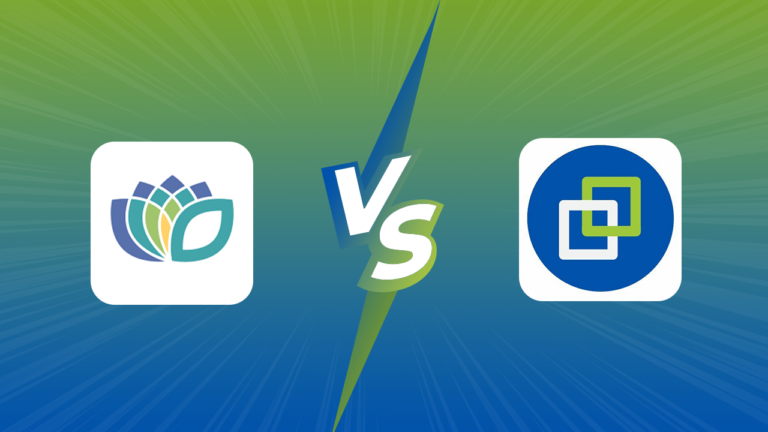In today’s fast-evolving digital landscape, the importance of website security cannot be overstated. As more businesses and individuals depend on the internet for various activities, from e-commerce to communication, the vulnerability of websites to cyber threats has grown significantly. Hackers and malicious actors are constantly devising new techniques to exploit security loopholes, steal sensitive data, and disrupt online operations. Inadequate security measures not only jeopardize the trust and confidence of website users but can also lead to dire consequences such as financial losses, damaged reputations, and legal repercussions. With the increasing prevalence of cyberattacks, safeguarding your website against potential risks has become imperative. In this blog, we will delve into practical tips that you can implement to bolster your website’s defenses, ensuring that your online presence remains secure and resilient in the face of emerging threats.
Table of Contents
ToggleHere’s a Full Description Of Each Of The Security Tips:
1. Use a Password Manager and Secure Passwords
Utilizing a password manager constitutes a pivotal stride in fortifying the security of your website. These digital guardians are designed to both generate and securely store intricate and distinctive passwords for each of your online accounts. This indispensable practice serves as a formidable deterrent against the grave implications of password reuse across various platforms. By ensuring that passwords are unique to each account, the potential vulnerabilities stemming from a single password leak are substantially diminished.
One of the foremost benefits of password managers lies in their ability to thwart brute-force attacks. By generating robust, alphanumeric passwords enriched with special characters, they craft a robust barricade against unauthorized access attempts. Such formidable combinations prove exceedingly difficult for automated bots to decipher, greatly enhancing the resilience of your website’s defense mechanism.
The significance of these tools extends beyond the realm of security; they alleviate the onerous task of remembering a plethora of complex passwords. This results in a streamlined user experience that does not compromise on security.
In an era where cyber threats are increasingly sophisticated, incorporating a password manager into your security arsenal is a proactive measure that underscores your commitment to safeguarding sensitive information. It exemplifies a prudent strategy that melds convenience with heightened security, effectively mitigating risks associated with data breaches and unauthorized access. As the cornerstone of modern cybersecurity practices, password managers offer peace of mind by elevating your website’s defenses against an evolving landscape of digital threats.
Also Read: SEO Tips For The Banking And Financial Services Industry
2. Implement Two-Factor Authentication
Two-factor authentication (2FA) stands as a robust shield against unauthorized access to digital accounts. It functions by requiring users to provide a supplementary verification method alongside their password, typically in the form of a code sent to their mobile device. This dual-layer authentication ensures that even if a password falls into the wrong hands, the account remains shielded. By enforcing 2FA across admin and user accounts on your website, you fortify its security against illicit access attempts. This preventive measure significantly diminishes the chances of breaches, data theft, and identity compromise. With the proliferation of cyber threats, implementing 2FA is a proactive strategy that safeguards sensitive information and cultivates a safer online environment for both website owners and their users.
Also Read: How to Set Up Weight-Based Shipping in WooCommerce?
3. Review and Manage User Accounts
Regularly reviewing and managing user accounts is a fundamental aspect of maintaining a secure website environment. By periodically assessing user accounts, you can identify and eliminate inactive or redundant accounts, which could potentially serve as entry points for unauthorized access. Moreover, ensuring that users are assigned appropriate permissions aligned with their roles is vital. This practice curbs the risk of security breaches by confining users to the access levels that are essential for their responsibilities.
By limiting privileges to what’s necessary, you create a controlled access structure that minimizes the potential impact of a security breach. For instance, only granting administrative rights to authorized personnel prevents unauthorized changes or modifications that could compromise the website’s integrity. Regular account audits and adjustments align your website with the principle of least privilege, enhancing security by allowing users access to only the specific resources essential for their tasks. In this way, the careful management of user accounts contributes significantly to a safer online environment, reducing the chances of unauthorized access and data breaches.
Also Reads: BigCommerce vs WooCommerce – Which One Should You Choose?
4. Install a Trustworthy Plugin and Theme
Selecting trustworthy plugins and themes is a pivotal aspect of maintaining robust website security. It’s imperative to procure these components exclusively from reputable sources, particularly the official WordPress repository. Opting for third-party platforms can expose your site to potential security hazards, as they might harbor malicious code capable of jeopardizing your site’s integrity. To ensure your website’s safety, it’s prudent to conduct thorough assessments. This includes scrutinizing user reviews, validating consistent updates, and verifying compatibility with your current WordPress version. By adhering to these precautions, you fortify your website against security vulnerabilities and mitigate the risk of falling victim to cyber threats. Your site’s security should always be a priority, and the origin and reliability of plugins and themes are key factors in preserving that security.
5. Keep Plugins and Themes Up to Date
Regularly updating your website’s plugins and themes is an essential and critical measure for maintaining robust website security. Software developers frequently release updates not only to introduce new features but also to address vulnerabilities and security gaps. Outdated plugins and themes can pose significant risks as they may contain known security vulnerabilities that malicious actors can exploit. Hackers often target websites with outdated components, attempting to breach them through these weak points.
By consistently keeping your plugins and themes up to date, you effectively shield your website from potential security breaches. The latest updates often include patches that address identified security flaws, minimizing the risk of unauthorized access or data breaches. This practice fortifies your website’s defense mechanisms, reducing the chances of falling victim to cyberattacks and ensuring that your digital presence remains resilient. In essence, maintaining current software components safeguards your website’s integrity and enhances its ability to withstand evolving security challenges.
Also Read: 10 Best Video Testimonial Software in 2024
6. Install a Security Plugin
Security plugins play a pivotal role in fortifying your website’s defenses against a myriad of cyber threats. Specifically crafted to bolster online security, these dedicated tools provide an array of protective functionalities, including but not limited to malware scanning, firewall fortification, and vigilant intrusion detection. By integrating a reputable security plugin into your website’s framework, you infuse an extra layer of safeguarding that operates proactively. These plugins actively scrutinize your site’s environment for any unusual or suspicious activities, swiftly identifying potential threats that might compromise your website’s integrity. Beyond detection, these plugins promptly alert administrators to emerging dangers, empowering them to take swift countermeasures. With a security plugin in place, you’re poised to fortify your digital assets against a spectrum of risks, ensuring a more resilient and secure online presence for both you and your users.
7. Stay Informed About Security
Staying vigilant against evolving cyber threats is paramount in upholding your website’s integrity. Keeping abreast of current security practices and potential vulnerabilities is essential to thwart potential breaches. Regularly engaging with reputable security blogs and forums enable you to stay informed about emerging risks and best practices. This knowledge empowers you to adopt proactive measures that fortify your website’s defenses. By following these crucial steps, including using a password manager, implementing two-factor authentication, managing user accounts, installing trustworthy plugins and themes, maintaining updates, employing security plugins, and staying informed, you create a multi-layered shield against potential threats. These practices collectively enhance your website’s security posture, significantly reducing the likelihood of security breaches and ensuring a safer online environment for both you and your valued users. Embracing these measures is an investment in safeguarding your digital presence and fostering trust in your online interactions.
Conclusion
In a digital landscape rife with potential threats, enhancing your website’s security becomes paramount. By following these seven key tips, you’re establishing a strong defense mechanism against cyber risks. Regularly updating software, adopting strong password practices, implementing SSL encryption, utilizing security plugins, maintaining regular backups, enabling Two-Factor Authentication, and monitoring website activity together create a robust shield for your online presence. The significance of maintaining a secure website cannot be overstated; it not only protects your valuable data but also instills trust in your users. Embrace these practices and empower your website’s resilience against evolving threats. Take charge today to ensure a safer digital journey for you and your users.
Interesting Reads:
11 Best Financial WordPress Themes








